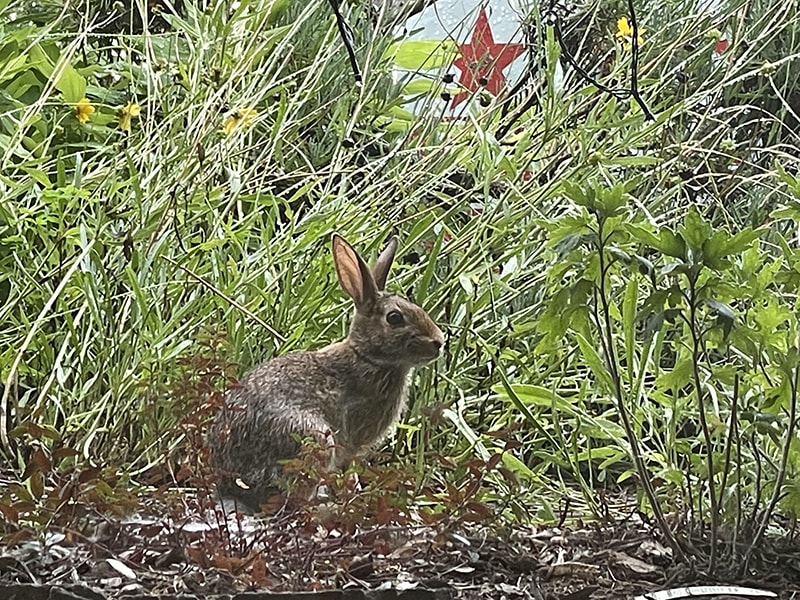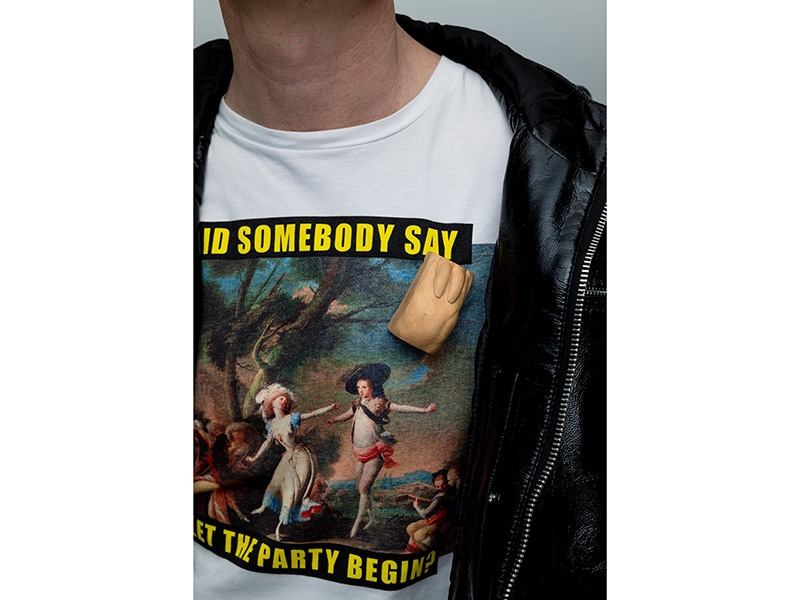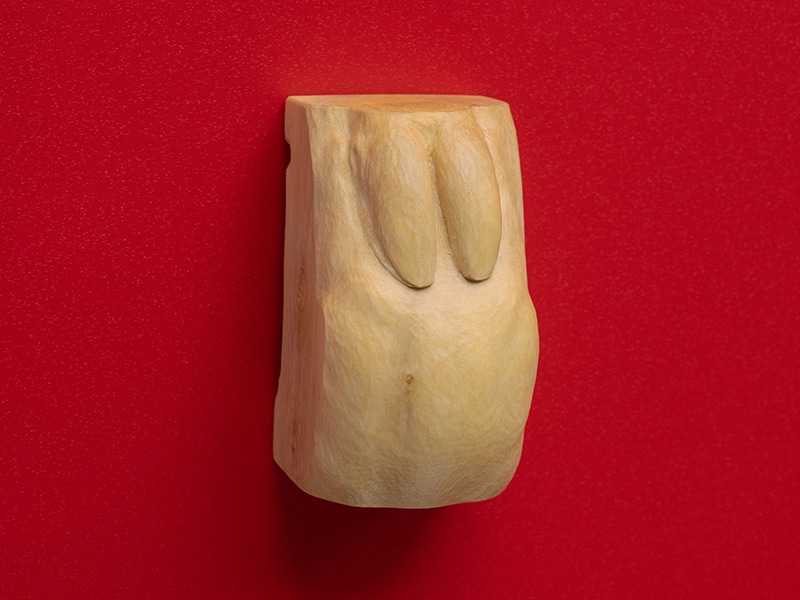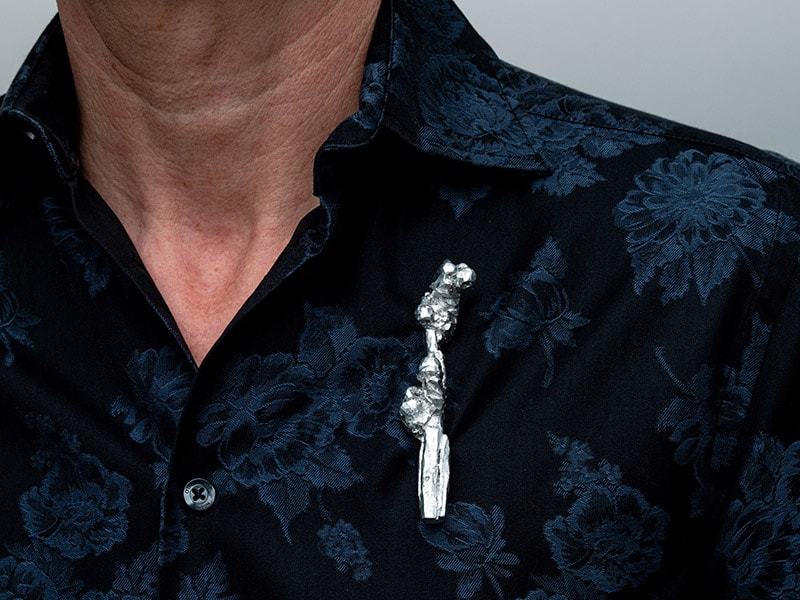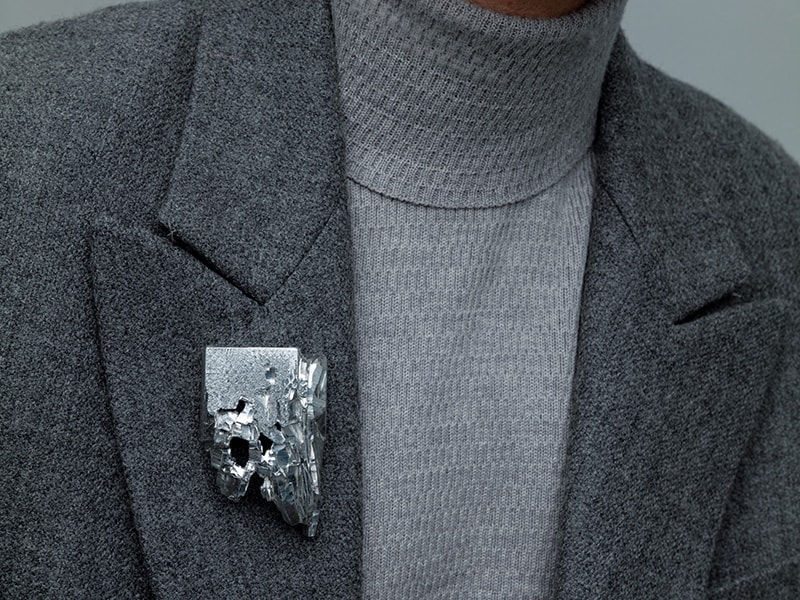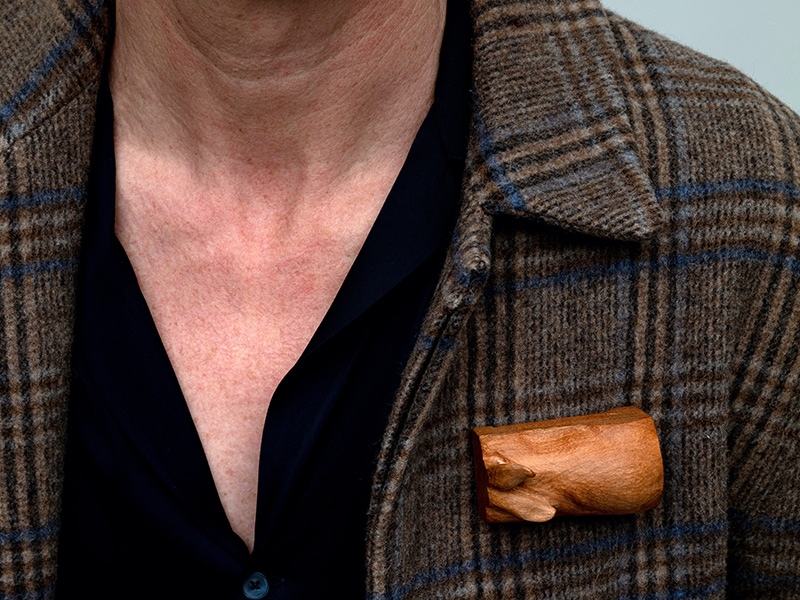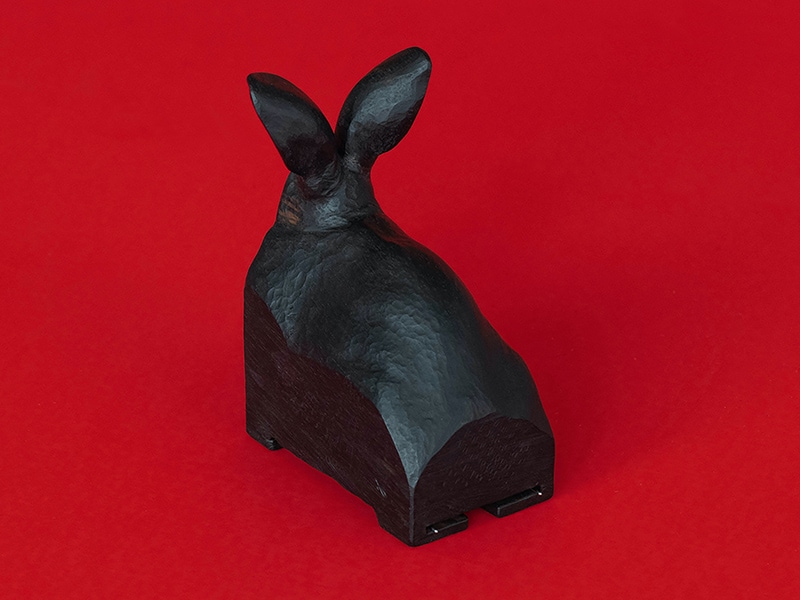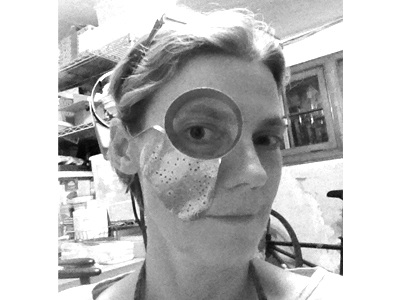
The Wild Garden
March 16–April 4, 2024
Jewelers’Werk Galerie, Washington, D.C.
How does an artist express emotion within a piece of jewelry? For the German maker Jutta Kallfelz, the answer is in the animal and plant world. There were plenty of emotions on display at Jewelers’Werk Galerie, in Washington, D.C., where Kallfelz had her first solo show in the US, aptly named The Wild Garden.
Her figurative brooches— she mainly makes brooches—reflect the artist’s longing to express deep emotions, identifiable emotions. For that she chooses living beings, carved from mostly hard materials, worked on with visible determination and tenderness. There were the animals: the rabbits, presented on rich purple felt on the gallery’s large display table. And then there were the plants and birds, in the gallery’s large window.
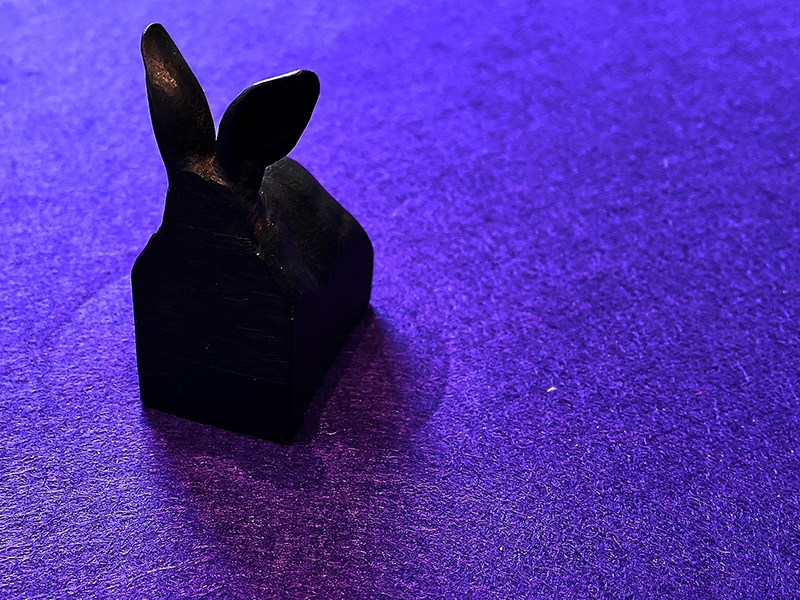
It is important to the artist that her animals and plants be recognizable. There is a heavy realism in the rabbits’ bodies, although their bodies are not fully depicted—they are cut short as by a windowpane, or by the dimensional limitations of the block of material chosen by the artist. Another German artist, Albrecht Dürer, whose exquisite nature studies include a beautiful watercolor of a hare, wrote in his Four Books on Human Proportions, “But life in nature manifests the truth of these things. Therefore observe it diligently, go by it and do not depart from nature arbitrarily, imagining to find the better by thyself, for thou would be misled. For, verily, ‘art’”—that is, knowledge—”is embedded in nature; he who can extract it has it. If thou acquires it, it will save thee from much error in thy work …”[1] Kallfelz surely observes nature well. And she may have touched Solomon’s Seal (as it is said that, after having had a dream, King Solomon could speak the language of animals).
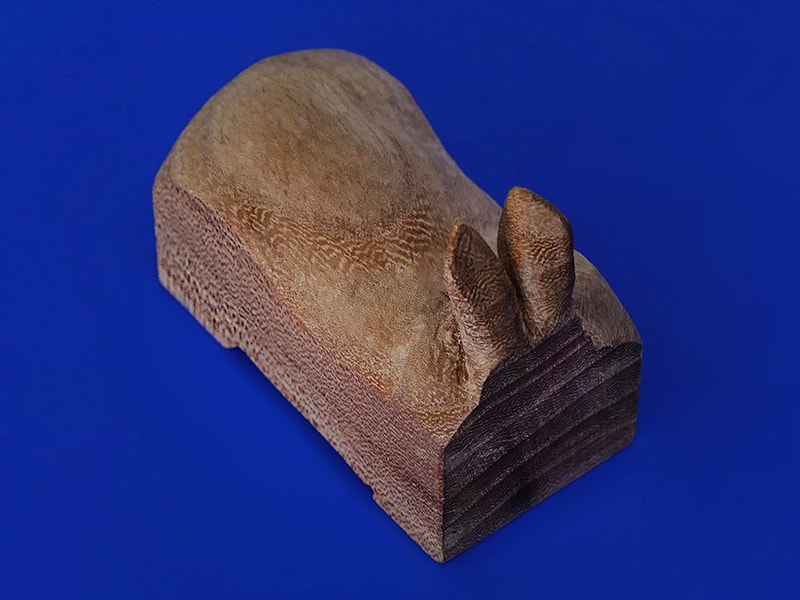
One is left to imagine how the rest of the rabbit’s body might look, what more it would have expressed. I wonder about their eyes. Kallfelz explained in her artist’s statement for the exhibition, “In the fragment I want to suggest the image of the living animal. It excites me to develop different characters through the respective emotional state.” She chooses as her focus the ears and the torso of the rabbits, as these parts of the body are the ones rabbits primarily communicate their sensations with. Anyone who ever observed a rabbit in their garden, in the field, the street, or forest, will attest to it.
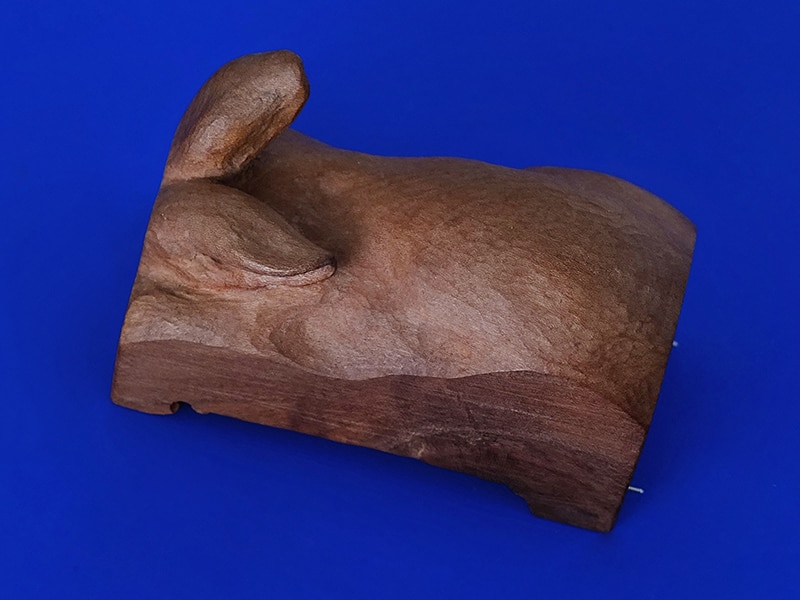
A sculptor friend of mine spoke to me about the story of Noah as a metaphor for the symbiosis between animals and humans—animals ourselves. And how, if one day humans discover that all the pain inflicted on animals breaks the animals’ souls just as pain breaks human’s souls, we may all be left holding their, and our, enormous pain.
“And they went in unto No’ah into the ark, two and two of all flesh, wherein is the breath of life.”[2]
Kallfelz’s rabbits made me remember this, and made me think of the concept of collective animal emotions, be they fear, alertness, repose, or the pleasure of being caressed. Her desire is to express through her sculpting the different states of tensions and emotions we all experience one moment or another. In her Schmuck 2023 entry, Kallfelz wrote about her pieces: “When I make sculptures of rabbits, I am concerned with making living beings visible in their individual characteristics.” And later, “Viewed as a sculpture, my rabbits have a life of their own. They do not need the human body. It is the dual role that interests me. Why I make sculptures out of my jewelry—and make jewelry out of my sculptures.”
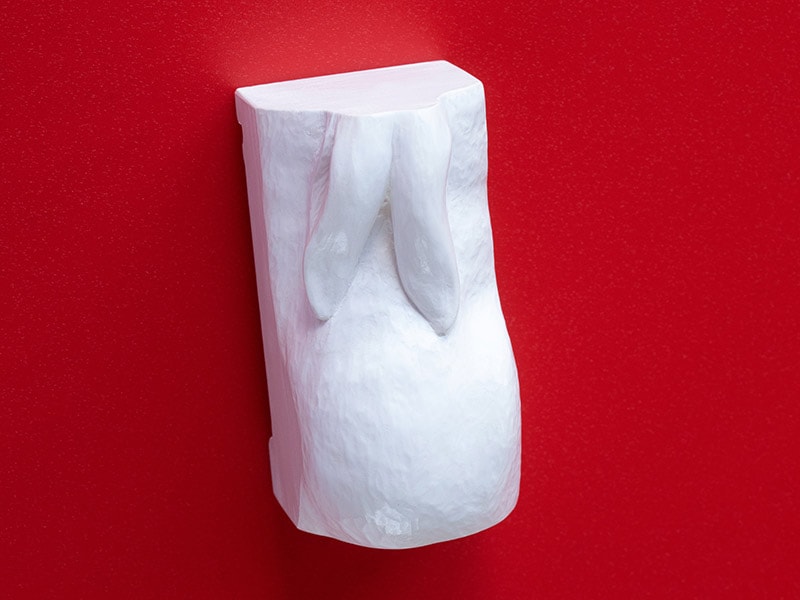
I had the chance to briefly meet Kallfelz this year in Munich. She explained how important the material she carves from is for her sculptures. For the rabbits she uses hard wood (ebony, boxwood, cherry) or other materials such as sepiolite (also known as “sea froth,” this rather rare sedimentary clay hardens and becomes very stable during the working process). The dialogue the artist has with the material, the distinctive resistance it puts up, and her determination to make it say what she hears, and then what she wants, are essential to her process. Kallfelz is an artist carefully sculpting the body, the muscles, and the fur of the animal. Every hair, every detail, is important to her. As Marcel Proust noted in his essay on Chardin and Rembrandt, “For the true artist, as for the natural scientist, every type is interesting, and even the smallest muscle has its importance.”[3]
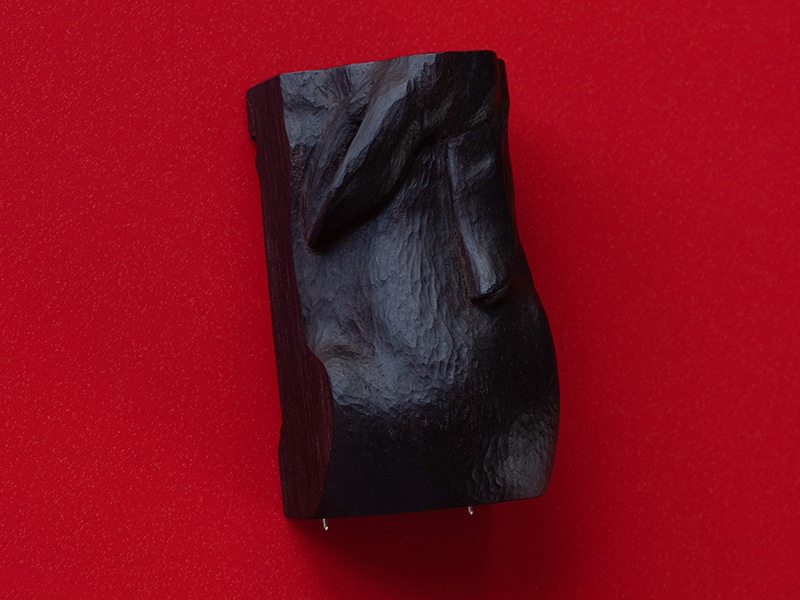
The finished wood pieces are warm and almost velvety to touch. Their detailed carving feels alive under one’s hand. You feel the need to cuddle and protect them. The sepiolite pieces are colder, and marblelike—although a matte marble, like Greek sculptures. (Not that I have ever touched one in a museum, although one always wishes to.) The back of the brooches is equally well tended to. The carving hollows the body and creates a natural setting for the brooch pin mechanism.
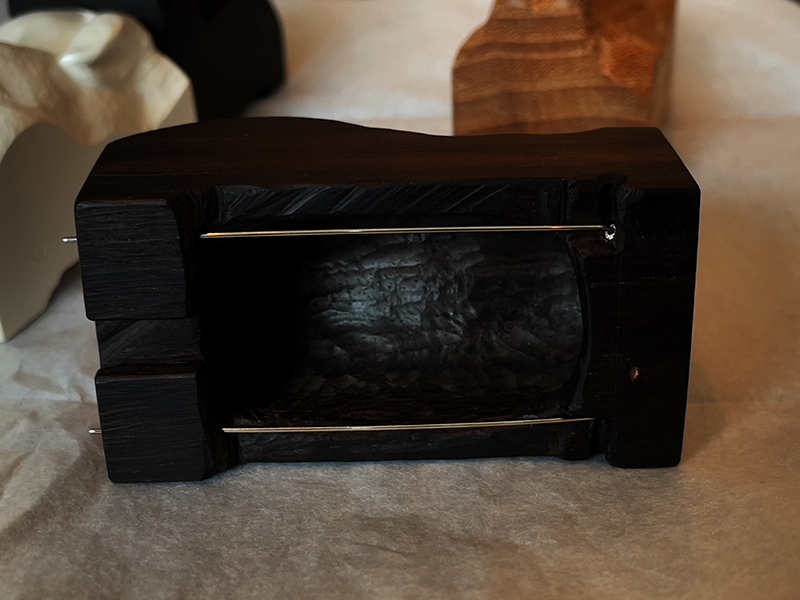
The pieces really must be touched and looked at closely to have a good grasp of the different states of tension and emotion that each specific rabbit goes through. And they do have lots of emotions, as well as names to go along with it. That the names do not necessarily reflect the gender of the rabbit makes one wonder about the past and future lives of these creatures. Will they end up on someone’s lapel? On the chest as a trusted companion? In a gallery window display, or in a drawer seldom to be looked at? Alone, or in the company of other beings from Kallfelz’s Wild Garden? These are not easy questions for the sensitive creatures that rabbits are. Certainly, I wish them well.
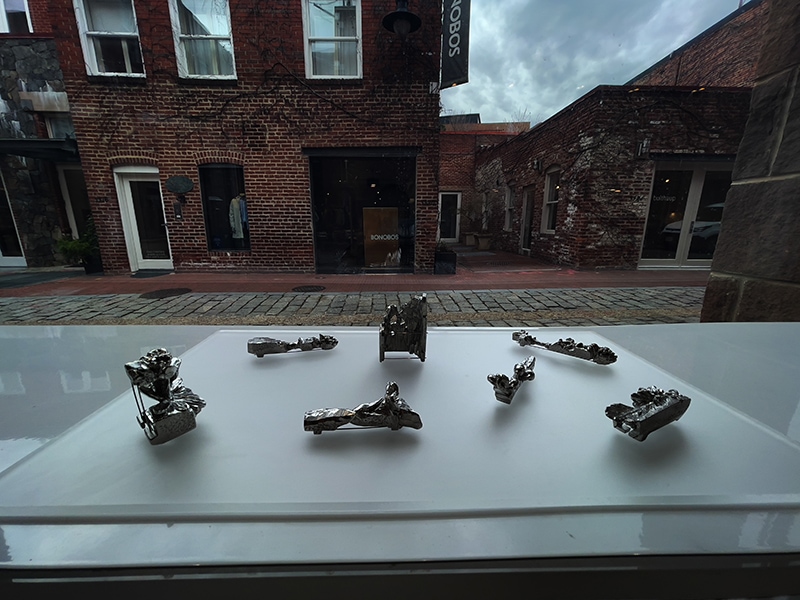
The flower and bird brooches were displayed in the window. The natural light they receive from the east orientation suited them. They are, after all, flowers and birds, or rather fragments of flowers and birds. They are made of hard, somewhat coarse aluminum that the artist chisels. She also makes her own tools, the chisels, out of rough iron rods she then forges.
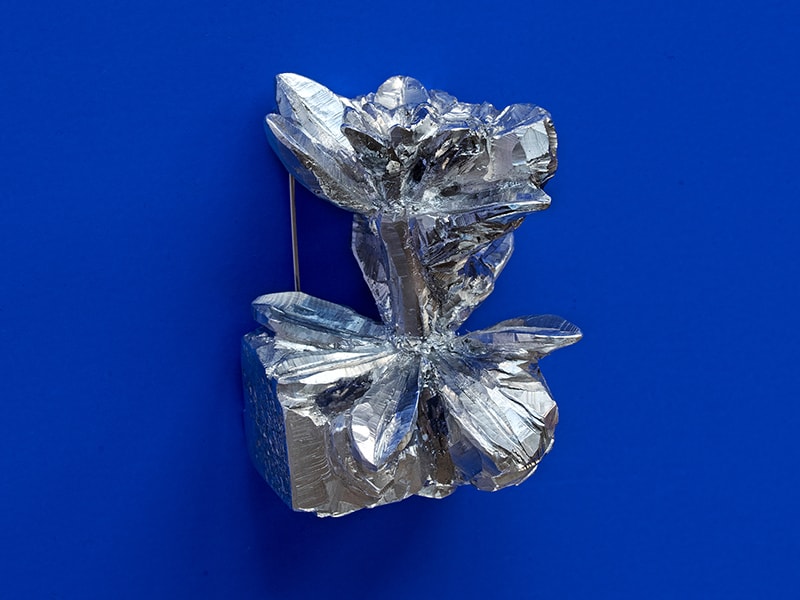
The artist’s longing to capture and hold on to a fleeting emotion, stirred by the beauty of a flower’s short-lived bloom, its evanescent fragrance, a bird’s grace, resonates in these pieces. So does the realism of the plants and birds, although these are not soft depictions.
These pieces rather speak the language of German expressionism. They are handsome, light, and a bit troubled. Her rabbits and birds are all emotional creatures, created for us to understand and identify with. I believe Jutta Kallfelz’s work really touches the souls and senses of whoever happens to be wandering through her “Wild Garden.”
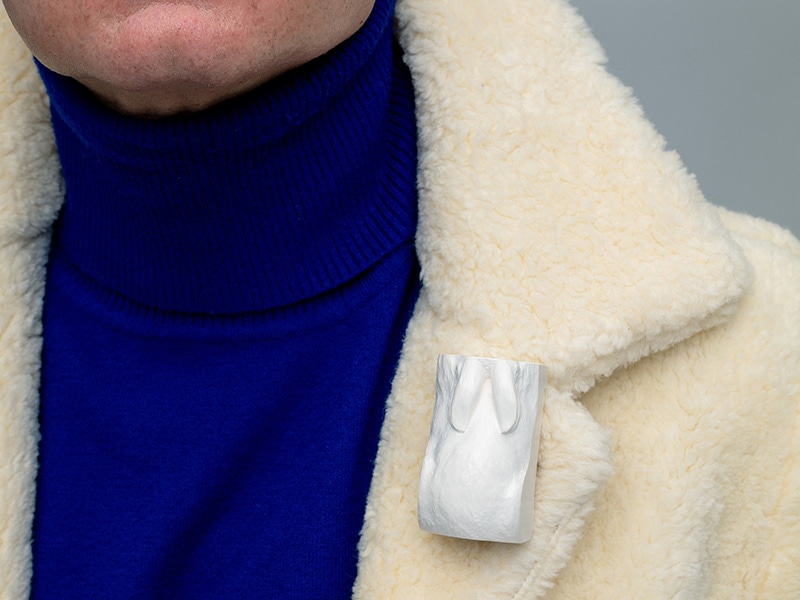
For her rabbits, Kallfelz was awarded the prestigious Herbert Hofmann Prize, in Munich, in 2023. The jurors noted, “The sculptural quality of the works carved in cherry, ebony, or meerschaum (sepiolite) is a key feature.” They went on to say, “The reduction of the form and its dimension create portable small sculptures, which also have an affectionate and humorous effect.” The rabbits shown at Schmuck in 2023 were Esra (alert and curious), Roxy (inquisitive and cheeky), and Rupert (handsome and relaxed), three characters I have been happy to meet, along with the rest of their tribe. May they show us how an artist’s empathy works to make us better human creatures.
Visit Jewelers’Werk Galerie’s list of exhibitions here.
[1] Dürer by Jeffrey Chipps Smith, Phaidon, 2012
[2] Genesis 7:15, The Holy Bible, authorized King James version (Nashville: Holman Bible Publishers, 1989).
[3] Marcel Proust, Chardin and Rembrandt (New York: David Zwirner Books, 2017).
Reviews are the opinions of the authors alone, and do not necessarily express those of AJF.
We welcome your comments on our publishing, and will publish letters that engage with our articles in a thoughtful and polite manner. Please submit letters to the editor electronically; do so here.
© 2024 Art Jewelry Forum. All rights reserved. Content may not be reproduced in whole or in part without permission. For reprint permission, contact info (at) artjewelryforum (dot) org
